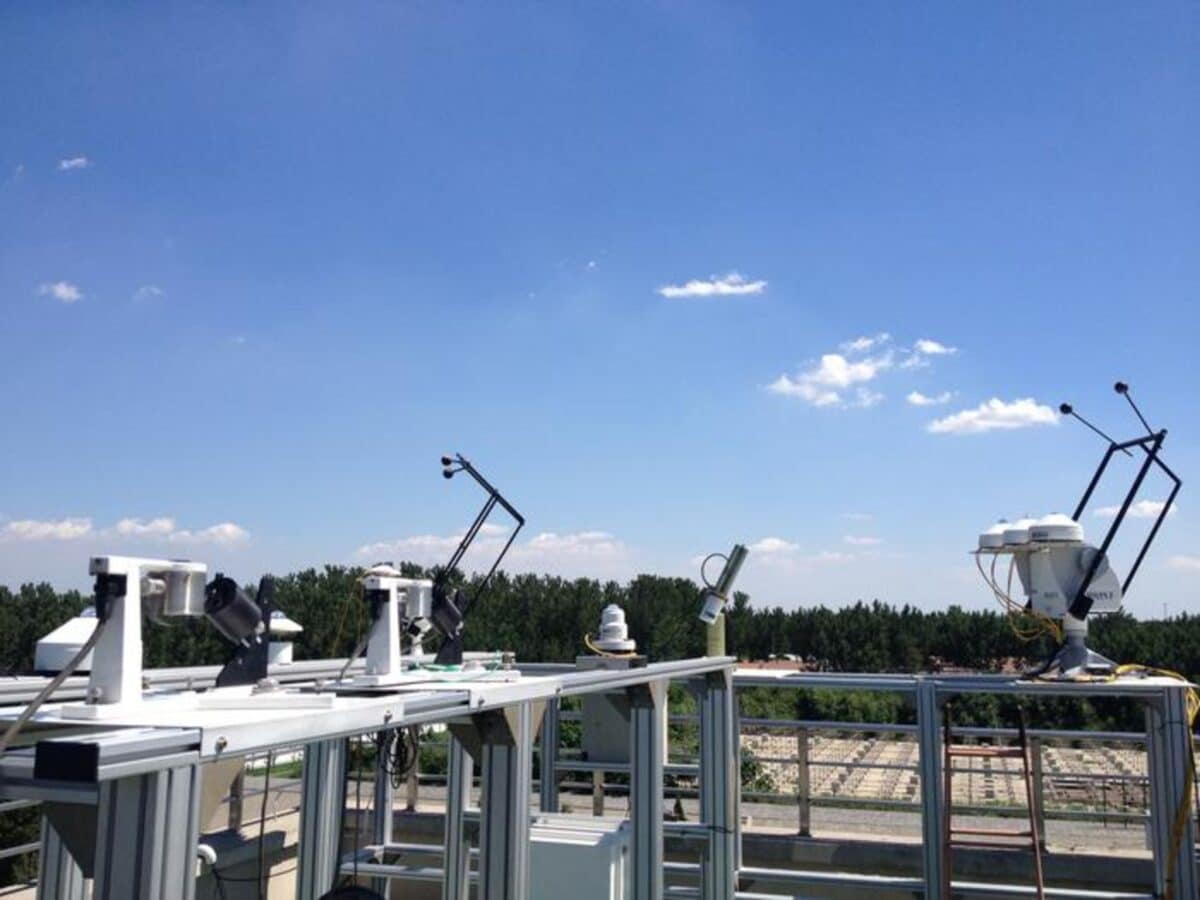
Air pollution blocks sunlight, reducing solar energy output and altering climate patterns worldwide. (Lane V. Erickson/Shutterstock)
When pollution rises, sunlight fades
In a nutshell
- After decades of “global dimming” caused by pollution, surface sunlight levels are now rebounding in parts of the world, especially in countries that have cleaned up their air.
- Tiny particles from industrial and vehicle emissions scatter sunlight, reducing how much reaches the ground. As countries like China reduce air pollution, sunshine levels are rising again.
- These changes in sunlight affect everything from crop yields to temperature trends and solar energy production, potentially adding billions in energy gains if brightening continues.
ZURICH — Sunshine is making a surprising return in some parts of the world after decades of growing dimmer. International scientists tracking the amount of sunlight reaching the Earth’s surface have discovered major shifts in solar radiation patterns that directly impact everything from crop yields to solar energy production.
For years, you might have noticed the sun didn’t seem as bright as it once did. This wasn’t just your imagination. From roughly the 1950s to the 1990s, many regions worldwide experienced what scientists call “global dimming,” a measurable decrease in surface solar radiation. But in recent decades, something unexpected has happened: the sun has begun shining brighter again in several regions, particularly in places that have cracked down on air pollution.
Dimming and Brightening Patterns Worldwide
A new perspective paper published in the journal Advances in Atmospheric Sciences reveals how this solar roller coaster ride affects our daily lives, from warming temperatures to food production, with a special focus on dramatic changes observed in China.
The authors, led by Martin Wild from the Institute for Atmospheric and Climate Science at ETH Zurich, note that China has experienced particularly significant variations. Substantial solar radiation decline from the 1960s through the 1990s was followed by signs of reversal in the 2000s and a slight recovery in recent years.

This global dimming and brightening phenomenon isn’t uniform across the planet. The paper shows that while Europe, Japan, and the United States experienced dimming until the 1980s followed by brightening thereafter, China only began showing recovery after 2000. Meanwhile, India continues to see declining sunlight levels throughout the entire study period.
What’s causing these dramatic shifts in sunshine? The primary suspect is air pollution. Aerosols, tiny particles suspended in the air from industrial emissions, vehicle exhaust, and other pollution sources, scatter and absorb sunlight before it reaches the ground. As pollution increased during industrialization, less sunlight reached the Earth’s surface. When regions implemented air quality regulations, the skies began to clear, and solar radiation increased.
When researchers compared Chinese ground-based measurements with satellite data that didn’t account for aerosol changes, they found a revealing mismatch. While actual measurements showed dimming until 2007 and brightening thereafter, satellite data that only considered cloud variations showed the opposite pattern, brightening until 2007 and dimming afterward. This discrepancy reveals the significant influence of increasing aerosol pollution before 2008 and decreasing pollution afterward, effects that weren’t captured in satellite observations.
Effects of Changing Sunlight
These changes in sunlight impact our daily lives in profound ways. In China, researchers have calculated that dimming reduced greenhouse gas-induced warming by 0.139°C per decade for land surface temperatures between 1960 and 2003. This helps explain why daily maximum temperatures increased less than minimum temperatures in China during this period: daytime heat was partially masked by reduced sunlight.
The paper also explains how dimming affects evapotranspiration (the process by which water transfers from land to the atmosphere through evaporation and plant transpiration), agricultural yields, and even underwater ecosystems. One study estimated that sunshine reduction explained 87% of decreased potential maize yield in the North China Plain. Another found that solar dimming contributed to underwater darkening in Chinese lakes, harming aquatic plant growth and fisheries.
The Billion-Dollar Question

For the rapidly expanding solar energy sector, these changes represent billions of dollars in potential revenue. The researchers cite studies showing that if sunlight levels in China could fully recover from decades of dimming to the cleaner conditions of the 1960s, Chinese photovoltaic power production, or the amount of solar energy China produces, could increase 12-13%. That translates to an economic benefit of approximately $6 billion annually based on projected 2030 solar infrastructure.
As countries implement air quality regulations and transition to clean energy, brightening trends may accelerate in currently polluted regions. However, the researchers caution that other factors, including natural climate variations and cloud patterns, can also influence radiation patterns in complex ways.
The sunlight reaching our planet isn’t constant; it responds to our pollution patterns and climate choices. If we want to power the future and protect the planet, we need to start with the skies—because shifts in sunlight affect everything from crops to climate resilience.
Paper Summary
Methodology
The researchers conducted a comprehensive review of existing literature on global dimming and brightening, analyzing worldwide radiation records from surface measurement stations, satellite-derived data products, and various proxy measurements. They paid particular attention to homogenizing historical data records to account for instrument changes and other potential sources of error. For China specifically, they examined 119 radiation stations with data dating back to the late 1950s, applying careful homogenization to remove artifacts from instrument replacements that occurred in the early 1990s. They also compared these ground measurements with satellite observations and various reanalysis products to identify discrepancies and underlying causes.
Results
The study found distinct patterns of dimming (decreasing surface solar radiation) from the 1950s to 1980s across multiple regions globally, followed by brightening in Europe, Japan, and the US starting in the 1980s. China showed continued dimming until the 2000s before exhibiting signs of recovery, while India experienced continuous dimming throughout the study period. Analysis of clear-sky measurements (removing cloud effects) revealed that aerosols from air pollution were a dominant driver of these trends, particularly in heavily polluted regions like China. The study also documented numerous impacts of these radiation changes, including effects on temperature trends, evapotranspiration, agricultural yields, lake ecosystems, and solar energy production. For China specifically, they found that solar dimming reduced greenhouse gas-induced warming of maximum land surface temperatures by 0.139°C per decade from 1960-2003.
Limitations
The authors note several challenges in quantifying global dimming and brightening. These include limited spatial coverage of historical radiation measurements, data quality and homogeneity issues in long-term records, and difficulties in separating human-induced effects from natural climate variability. They point out that both reanalysis products and climate models struggle to accurately reproduce observed radiation trends, with many models unable to capture either the magnitude or sometimes even the direction of observed changes. The paper also acknowledges uncertainty in attributing radiation changes to specific causes, with ongoing debate about the relative contributions of aerosol direct effects, aerosol-cloud interactions, and natural climate system variations.
Funding/Disclosures
The research was supported by Swiss National Science Foundation Grants (Grant Nos. 200021_135395, 200020_159938, 200020_188601) and received funding from the Federal Office of Meteorology and Climatology MeteoSwiss within the framework of GCOS Switzerland in support of the Global Energy Balance Archive (GEBA) hosted at ETH Zurich.
Publication Information
The paper titled “A Perspective on Global Dimming and Brightening Worldwide and in China” was written by Martin Wild, Yawen Wang, Kaicun Wang, and Su Yang, and published in Advances in Atmospheric Sciences in 2025. It was received on December 17, 2024, revised on February 6, 2025, and accepted on February 18, 2025. The paper is a contribution to the special issue on the International Radiation Symposium (IRS) 2024 and is published with open access at link.springer.com.







